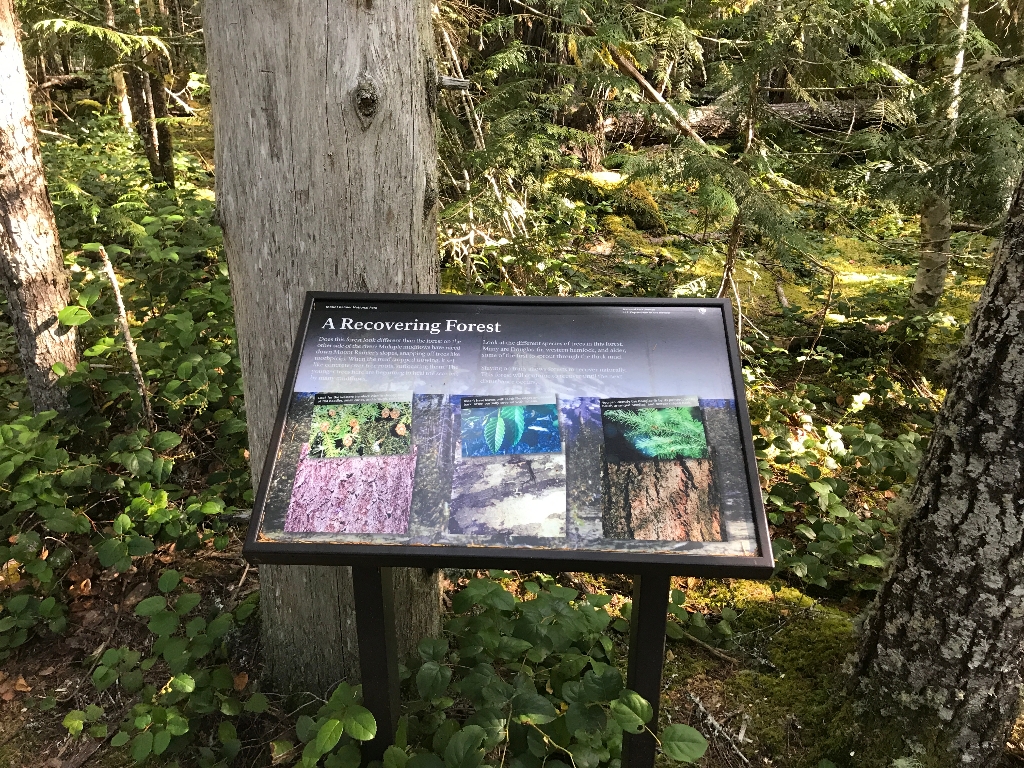
Title: A Recovering Forest
Main Text
Does this forest look different than the forest on the other side of the river? Multiple mudflows have raced down Mount Rainier's slopes, snapping off trees like toothpicks. When the mud stopped flowing, it set like concrete over tree roots, suffocating them. The younger trees here are beginning to heal the scar left by many mudflows. Look at the different species of trees in this forest. Many are Douglas-fir, western hemlock, and alder, some of the first to sprout through the thick mud.
Staying on trails allows forests to recover naturally. This forest will continue to recover until the next disturbance occurs.
Exhibit Panel Description
A faded historic color photo of Mount Rainier fills the exhibit panel and provides the background for the text and other photos. In the photo, the mountain peak rises above a stand of dead trees, with some young alder tree saplings growing around them. The text stretches across the top half of the panel. In the bottom half, three sets of photos highlight three common tree species. Each set includes a caption at the top of a close-up photo of the tree's branches and leaves, with a second photo underneath the first photo showing a close-up of that tree's bark. The photo set on the left reads: "Look for the western hemlock with its droopy limbs and flat needles, small cones, and a rough, scaly bark." The photo set in the middle reads: "Alder's have leaves with teeth-like edges and smooth bark, often partially covered with lichens." The photo set on the right reads: "You can identify the Douglas-fir by its pointed, bottle brush-arranges needles, and deeply ridged bark."
Visit This Exhibit Panel
From the Kautz Creek parking lot, cross the road to the Kautz Creek Nature Trail. Kautz Creek, open year-round, is located three miles east of the Nisqually Entrance in the southwest corner of the park along the road to Longmire.
Is there something we missed for this itinerary?
Itineraries across USA


















































